Powering up: How batteries are driving the e-mobility revolution
Our daily travel is harming the planet. But advances in battery technology, performance, safety and recyclability could help it recover, by facilitating the global transition to more sustainable energy systems.
Collectively, transport is responsible for just under one quarter of global CO2 emissions, according to International Energy Agency (IEA) data. Road vehicles like cars, buses and trucks, contribute three-quarters of that figure. Aviation and shipping each contribute around 11% of total transport emissions, while rail contributes just over 1%[1].
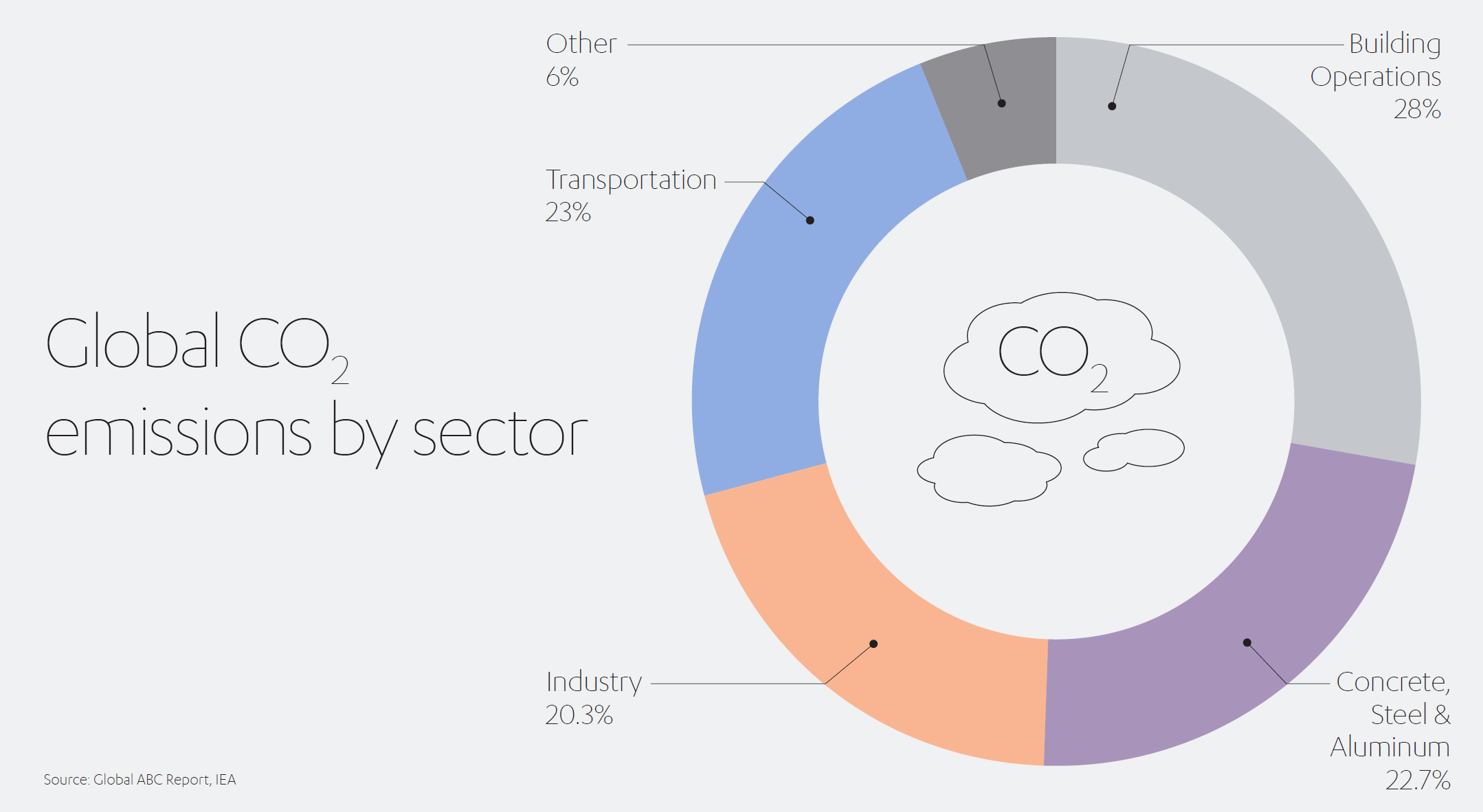
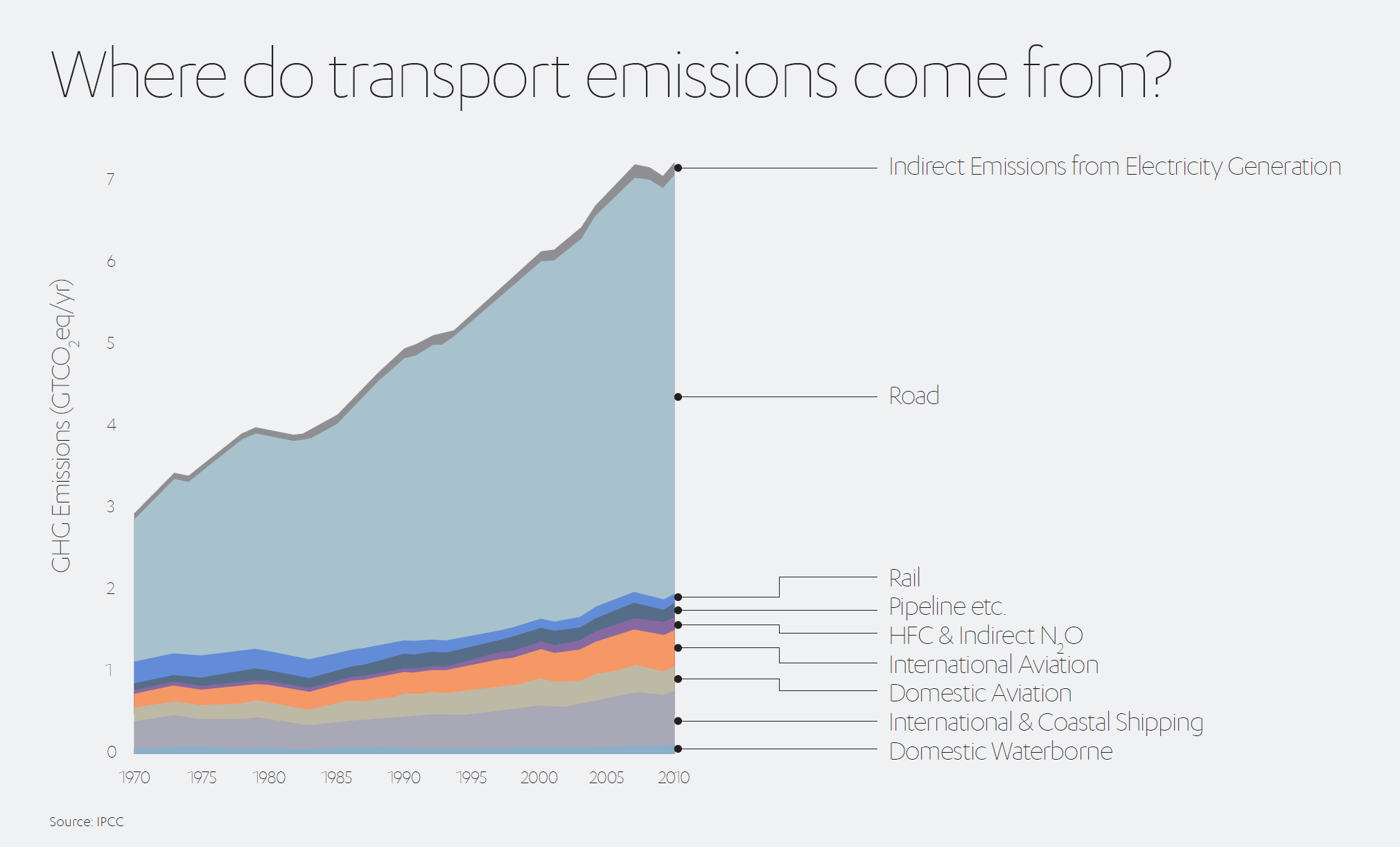
While supranational global organizations have called for urgent action to tackle climate change, national governments and even individual cities have already begun taking their own, positive, steps to limit exposure to harmful emissions, like CO2 and nitrogen dioxide.
In the UK, the government plans to ban new petrol and diesel cars and vans from 2040, as part of a £3 billion (US$ 3.9 billion) clean air strategy. France has also pledged to end the sale of petrol and diesel vehicles by 2040, while Denmark has proposed a full ban on new petrol and diesel cars by 2030 and on hybrid vehicles from 2035. Meanwhile, the mayors of Paris, Madrid, Mexico City and Athens have said they plan to ban the most polluting diesel vehicles from city centers by 2025[2].
But with emissions from transport rising faster than any other type[3], and demand for transport set to increase as our cities continue to expand, the need for cleaner, greener mobility solutions has never been more pressing.
For decades, electric vehicles (EV) have been touted as the answer to this conundrum. In many ways, they are the ultimate disruptive innovation. Unlike other game changing technologies like nuclear fusion[4], the base technology behind e-mobility already exists and is in place around the world. Yet so-called e-mobility has never yet quite reached the promise of its potential.
A flurry of recent advances in battery technology, however, could finally push e-mobility into the mainstream as the electric vehicle revolution gathers pace.
EVs driving the future
The benefits of e-mobility are clear. Electrification is a key decarbonization lever for road transport. In use, EVs currently emit 30%-60% fewer emissions than combustion engines, depending on the power mix[5].
As well as eliminating fossil fuels in our road vehicles, electric vehicles – and the batteries that power them – also enable a greater share of intermittent renewable energy to enter grid systems. When it is particularly sunny or windy, the supply of renewable power can exceed the demand for grid electricity. Whereas batteries enable energy to be stored for several hours or days.
Furthermore, the materials in batteries can be recovered and recycled – some of them indefinitely[6] – unlike fossil fuels, which are burned and lost forever when used for energy production.
In fact, according to the IEA’s Tracking Clean Energy Progress report, electric vehicles are one of only seven of the 45 energy technologies and sectors that are on track to meet the Sustainable Development Scenario[7], which is aligned to global commitments in the 2015 Paris climate agreement.
The stats are certainly encouraging. According to Global EV Outlook 2019, the global share of electric car sales rose to more than 2.5% of new car sales in 2018[8]. The global electric car fleet exceeded 5.1 million, up from 3.1 million in 2017, representing an increase of 63%[9]. In terms of overall share of the global passenger car stock, the IEA forecasts that EVs will increase from 0.8% in 2020 to almost 15% by 2030[10].
Experts predict the electric vehicle market to continue expanding for the foreseeable future. The latest edition of the Electric Vehicle Outlook, an annual report from BloombergNEF, forecasts passenger electric vehicle sales to rise to 10 million in 2025, 28 million in 2030 and 56 million by 2040[11]. Bloomberg forecasters also predict that the share of electric vehicle sales will exceed internal combustion engine (ICE) sales by the mid-to-late 2030s.
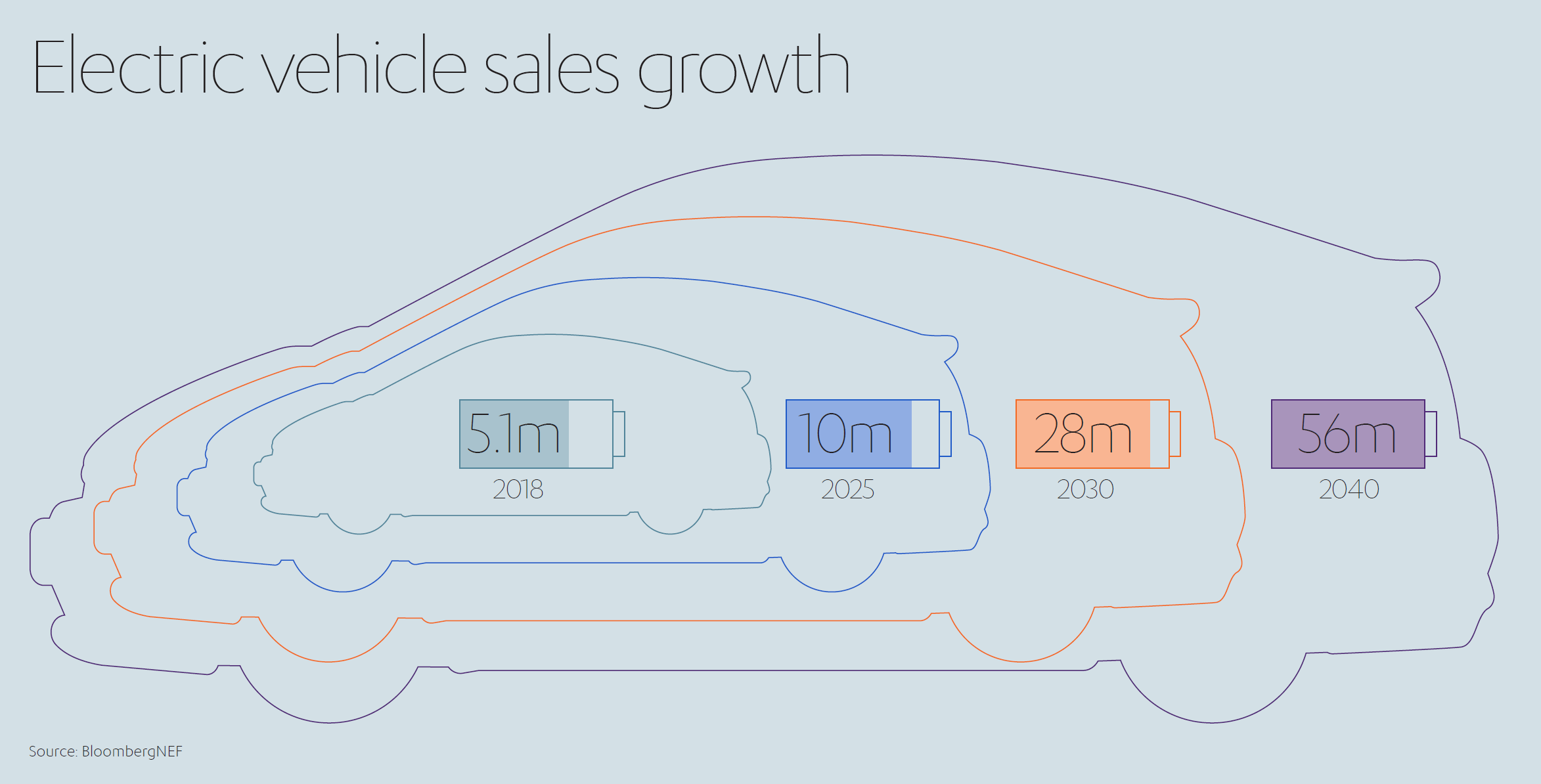
But although electric vehicles are increasingly popular and have the potential to make a significant impact to emissions reduction targets, that potential can only be realized if e-mobility becomes the norm, rather than the exception. And winning that battle means overcoming more than a century of familiarity, loyalty and trust for the traditional internal combustion-engine (ICE) – not to mention more recent preconceptions and technical and infrastructural challenges that have hindered the take-up of electric vehicles.
Changing perceptions
In a UK Government’s Department for Transport (DoT) 2016, study into driver attitudes towards electric cars[12], researchers found that the three most important factors that put consumers off buying an electric vehicle were the availability of charging points, the range you can travel on one charge, and the cost at point of purchase.
All three of these issues boil down to the same problem: batteries. Unlike trains and trams, road vehicles can’t be fitted with an external power connection, so they need to carry all their potential energy around with them in the form of a battery. Indeed, it is difficult to overstate the importance of batteries in the success of mobility electrification.
Batteries are by far the largest cost component in an electric vehicle, they dictate the range the car can travel, and they determine how often they need charging up. Get the battery right, and the three main challenges in the mass take-up of e-mobility evaporate in a zero-emission haze.
For a long time, though, batteries have been the Achilles heel of electric vehicles. They kept the costs high and the range low, leading to the kind of negative perceptions revealed in the UK DoT study from a few years ago. But recent improvements in battery technology could transform the electric vehicle industry – changing consumer perception – and hence see e-mobility finally realize its potential.
Supercharging storage
Batteries convert electrical energy into chemical energy while they charge and reverse this process when they are used to power vehicles, gadgets and, increasingly, homes.
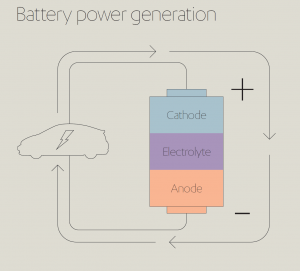 Most batteries are made up of two electrodes – a negative anode and a positive cathode – and an electrolyte, which reacts with the electrodes to create energy.
Most batteries are made up of two electrodes – a negative anode and a positive cathode – and an electrolyte, which reacts with the electrodes to create energy.
Compared with other areas of electronics, the development of battery technology has been relatively slow[13]. Until recently, much of the progress made has been driven by portable devices such as smartphones and laptop computers. With the increasing focus on e-mobility over the past decade, however, the development of battery technology has moved into top gear.
One of the major research hurdles in the development of new batteries has been finding suitable materials for electrodes and electrolytes that work well together and generate high levels of energy efficiently, without compromising safety or other aspects of the battery design.
Another challenge is that batteries must meet challenging consumer demands. For e-mobility batteries, this means simultaneously fulfilling criteria such as high power and energy density, long autonomy, long life, low cost and high safety, while also being easy to recycle[14].
Bring on the batteries
Over the past two decades, lithium-ion batteries have emerged as the battery of choice for most electric vehicles, due to their better performance, efficiency and safety compared to traditional batteries. The big downside, however, was the cost. And although performance was better than traditional batteries, it still wasn’t anywhere near as good as an ICE.
Invented around 30 years ago, lithium-ion batteries use lithium ions as the interlocutors between the cathode and anode. Far lighter and more compact than earlier types of rechargeable battery, and able to hold their charge for longer, they are now found in everything from mobile phones to laptops – and electric vehicles. The three scientists that pioneered their development were awarded the Nobel Prize for chemistry as recently as October 2019.
Now, a new generation of lithium-ion batteries is having a dramatic impact on e-mobility and other sectors thanks to their ability to store a large amount of energy in a small, compact battery and be recharged again and again.
The General Motors model Vauxhall Corsa E, for example, a small passenger car released in the UK in April 2019, has a range of 209 miles[15], long enough to drive between London and Manchester on one charge. Some higher-end electric cars can go even further on one charge. US EV start-up Rivian will launch its RT1 with a 180 kilowatt-hour capacity battery pack that can travel 410 miles on a single charge – far enough to get you from Manhattan to Montreal, or Abu Dhabi to Muscat.
Toyota, which pioneered the hybrid electric vehicle market with the best-selling Prius and has made ground-breaking advances in hydrogen-fueled vehicles, plans to launch 10 electric vehicles in the early 2020s, starting in China before rolling them out to Japan, India, the United States and Europe. It aims to sell 5.5 million electrified vehicles by 2025[16].
Technological advances made over the next few years look set to push the market further. Analysis by accountancy firm BDO found that the world’s top 20 carmakers spent US$ 86 billion on research and development in 2018, up from US$ 82 billion the year before[17], as they accelerate the transition towards electric and autonomous vehicles. And this figure does not include the many small car makers that focus exclusively or primarily on electric vehicles.
Much of the innovation taking place around batteries concerns the materials used in their construction. Battery researchers are constantly experimenting with different materials and chemistries to make batteries cheaper, denser, lighter, more powerful and more sustainable. So-called ‘next generation’ lithium-ion batteries are a key area of research. Tesla, for example filed a patent for additive-enriched lithium-ion batteries, with a much longer lifespan[18]. The company is also reportedly developing batteries with cathodes made from lithium-iron phosphate (LiFePO4).[19]. These so-called LFP batteries are reportedly free of cobalt, which is expensive and environmentally destructive. LFP batteries also have higher charge and discharge rates and longer lifetimes than conventional lithium-ion cells.
Safer and stronger
Scientists are finding ways to push the limits of lithium-ion batteries with new active families of materials[20]. In 2019, IBM Research announced it had discovered a new, more sustainable battery chemistry that’s free from heavy metals like nickel and cobalt and which could potentially out-perform lithium-ion technology. IBM claims all the materials used in this battery can be extracted from standard seawater, severely reducing the environmental impact of batteries.
Another area of focus is battery technologies that use a ‘dry’, nonflammable electrolyte rather than a liquid. Many believe these so-called solid-state batteries are the future of batteries, both in terms of safety and performance.
In February 2020, Mercedes-Benz announced a partnership with the Canadian utility Hydro-Québec to develop next-generation lithium batteries with a solid and nonflammable electrolyte[21]. The previous month, the Canadian utility announced a separate partnership with the University of Texas and lithium-ion battery pioneer (and Nobel Prize winner) John Goodenough, to commercialize a solid-state battery with a glass electrolyte[22].
Similarly, in February 2020, Toyota announced a joint venture with electronics giant Panasonic that will specialize in the development and production of prismatic lithium-ion batteries for electric vehicles (EVs), as well as more advanced energy storage solutions like solid-state batteries[23].
Meanwhile, in March 2020, researchers from the Samsung Advanced Institute of Technology and the Samsung R&D Institute Japan announced they had developed a solid-state battery that could deliver an EV range of 500 miles (800 km) on a single charge. The battery prototype is also longer-lasting, with a cycle life of more than 1,000 charges, and has enhanced overall safety, said the research team[24].
Another innovator taking a slightly different approach to electric vehicle innovation is US-based EV start-up Rivian, in which Abdu Latif Jameel is an early-stage investor. For its new product line-up, there are two options, a 105kWh lithium-ion battery stack with a nominal range of about 190 miles, or a huge 180kWh battery that can power the cars for more than 400 miles. While many early customers are eagerly anticipating the arrival of these large electric cars, the real genius of Rivian lies not only in the batteries, but also in the company’s innovative ‘skateboard’ chassis.
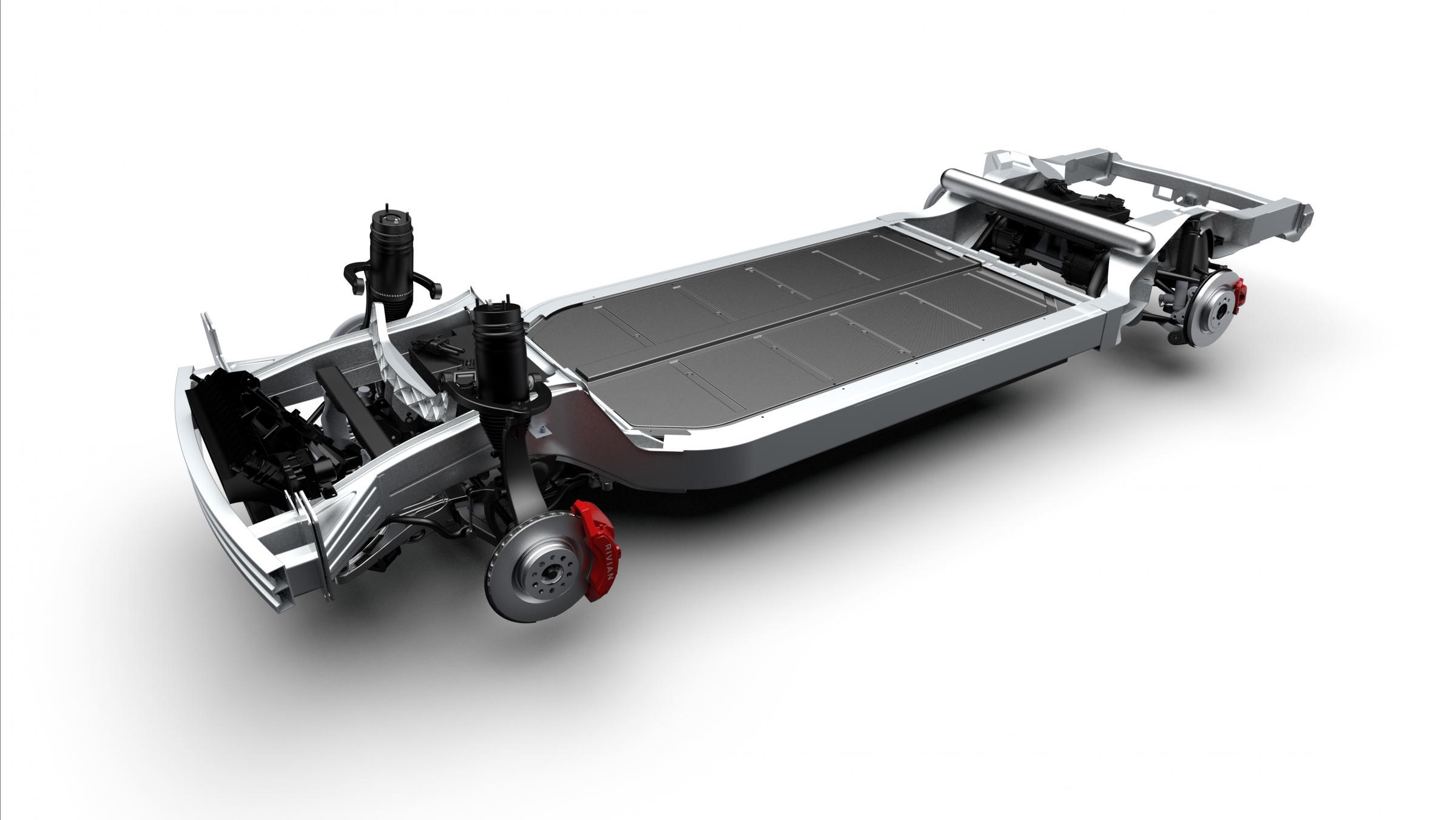
This houses the vehicle’s quad motors, independent air suspension and hydraulic roll control system, as well as the lithium-ion battery[25]. Rivian’s flexible platform also includes an intelligent battery management system, which uses artificial intelligence to extend the lifespan of each vehicles’ battery. The AI will observe how new owners drive and charge their vehicles before adjusting different parameters in order to maximize longevity. It is reported that smarter charging strategies – personalized to each individual owner – could increase a Rivian’s battery life by up to three times[26].
Charging ahead!
Even while the major players are announcing a stream of battery innovations, new research coming out of labs and specialist start-ups across the globe is pushing forward the boundaries of battery technology even further.
 Researchers at Pennsylvania State University[27] in the US, for example, have developed a technology that could provide more than 200 miles of charge in as little as 10 minutes. Using a normal at-home charging point, a typical electric car would usually take around eight hours to charge from empty-to-full[28].
Researchers at Pennsylvania State University[27] in the US, for example, have developed a technology that could provide more than 200 miles of charge in as little as 10 minutes. Using a normal at-home charging point, a typical electric car would usually take around eight hours to charge from empty-to-full[28].
“If we have a ubiquitous fast-charging infrastructure on the roadside, drivers need no longer to worry about the cruise range. After driving 200-300 miles per charge, one can pick up another 200-300 miles by charging for 10 minutes,” said Dr Chao-Yang Wang, who led the research[29].
Echion Technologies, a start-up based in Cambridge, UK, said in February that it had developed a new anode for high-capacity lithium batteries that could charge in just 6 minutes[30]. Not to be outdone, a team of researchers in South Korea announced that same month that its own silicon anode would charge to 80 percent in 5 minutes[31].
Prices down as demand rises
BloombergNEF forecasters expect annual lithium-ion battery demand for electric vehicles to increase exponentially over the next decade, passing 1,748GWh annually by 2030[32]. The total demand for batteries in all applications was just 180GWh in 2018[33].
Passenger cars and commercial vehicles are collectively expected to account for around 83% of global battery demand by 2030[34].
As demand rise the battery technology advances, the cost is expected to decrease, from US$ 176/kWh in 2019 to US$ 87/kWh in 2025 and US$ 62/kWh in 2030[35], which should help make electric vehicles more attractive to the mass market.

For a midsize car made in the US in 2015, the battery made up more than 57% of the car’s total cost. In 2019, that figure was 33% and by 2025, the battery will be just 20% of the total price tag[36].
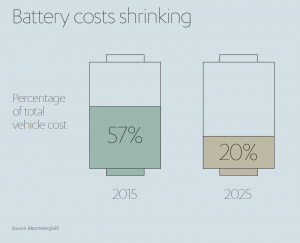 According to consultants at Deloitte, 2022 is predicted to be the ‘banner year’ when the price of owning and running EVs will achieve parity with ICE counterparts: “With the cost of ownership no longer a barrier to purchase, EVs will become a realistic, viable option for any new car buyer[37].”
According to consultants at Deloitte, 2022 is predicted to be the ‘banner year’ when the price of owning and running EVs will achieve parity with ICE counterparts: “With the cost of ownership no longer a barrier to purchase, EVs will become a realistic, viable option for any new car buyer[37].”
If Deloitte’s prediction is correct, and EVs manage to win over consumer skepticism to become the dominant vehicles on driveways and in car parks across the globe, it will be due in no small part to the battery technology.
The mysterious black box that is the crucial catalyst for maximizing the delivery of power to the vehicle, reassurance to the owner and cash to the manufacturer.
[1] https://www.iea.org/reports/renewables-2019/transport
[2] https://www.unenvironment.org/news-and-stories/story/gearing-change-transport-sector-feels-heat-over-emissions
[3] https://www.unenvironment.org/news-and-stories/story/gearing-change-transport-sector-feels-heat-over-emissions
[4] https://www.bbc.co.uk/news/science-environment-50267017
[5] http://www3.weforum.org/docs/WEF_A_Vision_for_a_Sustainable_Battery_Value_Chain_in_2030_Report.pdf
[6] https://ec.europa.eu/environment/integration/research/newsalert/pdf/towards_the_battery_of_the_future_FB20_en.pdf
[7] https://www.iea.org/topics/tracking-clean-energy-progress
[8] https://www.iea.org/reports/global-ev-outlook-2019
[9]https://www.mckinsey.com/~/media/mckinsey/industries/automotive%20and%20assembly/our%20insights/the%20road%20ahead%20for%20e%20mobility/the-road-ahead-for-e-mobility-vf.ashx
[10] https://www.iea.org/data-and-statistics/charts/electric-car-market-share-in-the-sustainable-development-scenario-2000-2030
[11] https://about.bnef.com/electric-vehicle-outlook/
[12] https://www.gov.uk/government/statistics/public-attitudes-towards-electric-vehicles-2016
[13] https://ec.europa.eu/environment/integration/research/newsalert/pdf/towards_the_battery_of_the_future_FB20_en.pdf
[14] https://www.nature.com/articles/nmat4777
[15] https://www.vauxhall.co.uk/cars/new-corsa/electric.html
[16] https://www.toyota-europe.com/world-of-toyota/feel/environment/better-air/electric-vehicle
[17] https://www.bdo.co.uk/en-gb/news/2019/top-20-carmakers-r-d-spend-tops-70bn-in-a-year
[18] https://www.businessinsider.com/million-mile-battery-tesla-miles-lifetime-2019-11?r=US&IR=T
[19] https://www.reuters.com/article/us-tesla-china-electric-exclusive/exclusive-tesla-in-talks-to-use-catls-cobalt-free-batteries-in-china-made-cars-sources-idUSKBN20C0RP
[20] https://www.saftbatteries.com/media-resources/our-stories/three-battery-technologies-could-power-future
[21] http://news.hydroquebec.com/en/press-releases/1580/hydro-quebec-partners-with-mercedes-benz-on-development-of-solid-state-battery-technologies/
[22] https://spectrum.ieee.org/energywise/energy/batteries-storage/john-goodenough-glass-battery-news-hydroquebec
[23] https://global.toyota/en/newsroom/corporate/31477926.html
[24] https://news.samsung.com/global/samsung-presents-groundbreaking-all-solid-state-battery-technology-to-nature-energy
[25] https://rivian.com/technology/
[27] https://news.psu.edu/story/594641/2019/10/30/research/and-out-10-minute-electrical-vehicle-recharge
[28] https://pod-point.com/guides/driver/how-long-to-charge-an-electric-car
[29] https://www.theguardian.com/environment/2019/oct/30/electric-cars-could-be-charged-in-10-minutes-in-future-finds-research
[30] https://echiontech.com/news.php
[31] https://www.eurekalert.org/pub_releases/2020-02/nrco-krd022120.php
[32] https://about.bnef.com/electric-vehicle-outlook/
[33] http://www3.weforum.org/docs/WEF_A_Vision_for_a_Sustainable_Battery_Value_Chain_in_2030_Report.pdf
[34] http://www3.weforum.org/docs/WEF_A_Vision_for_a_Sustainable_Battery_Value_Chain_in_2030_Report.pdf
[35] https://about.bnef.com/electric-vehicle-outlook/
[36] https://www.bloomberg.com/opinion/newsletters/2019-04-12/electric-vehicle-battery-shrinks-and-so-does-the-total-cost-juebizw9
[37] https://www2.deloitte.com/content/dam/Deloitte/uk/Documents/manufacturing/deloitte-uk-battery-electric-vehicles.pdf





 1x
1x

 Added to press kit
Added to press kit


